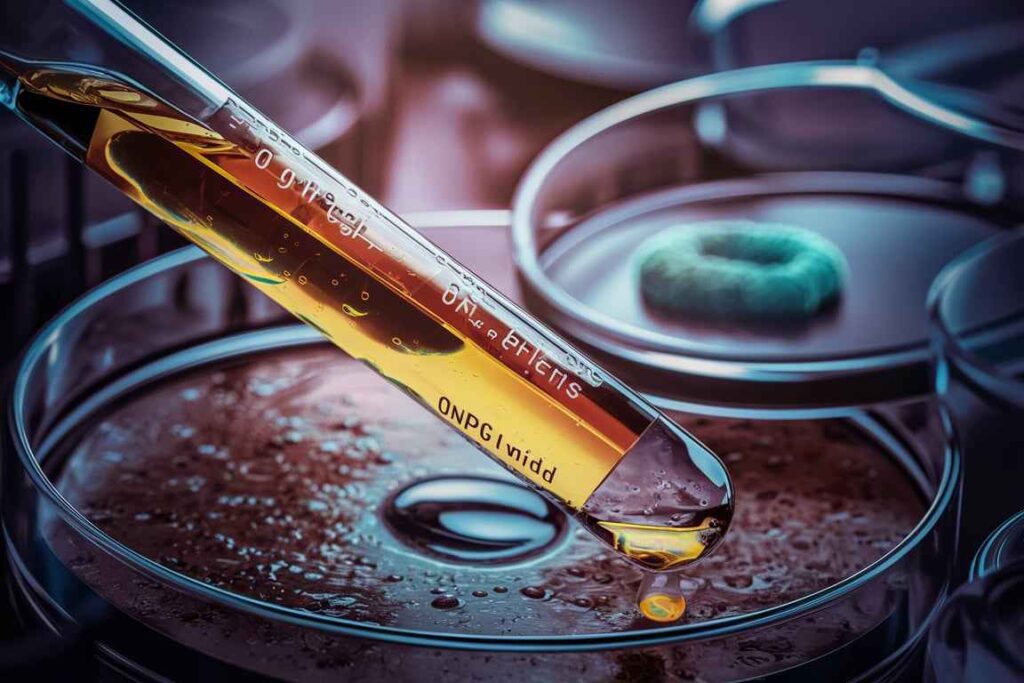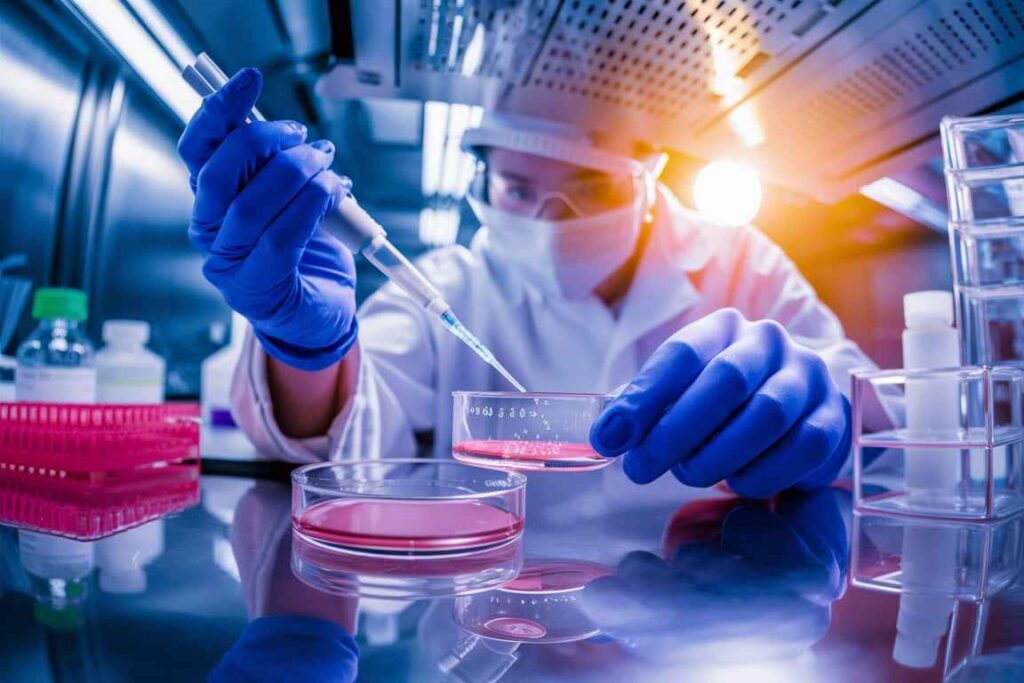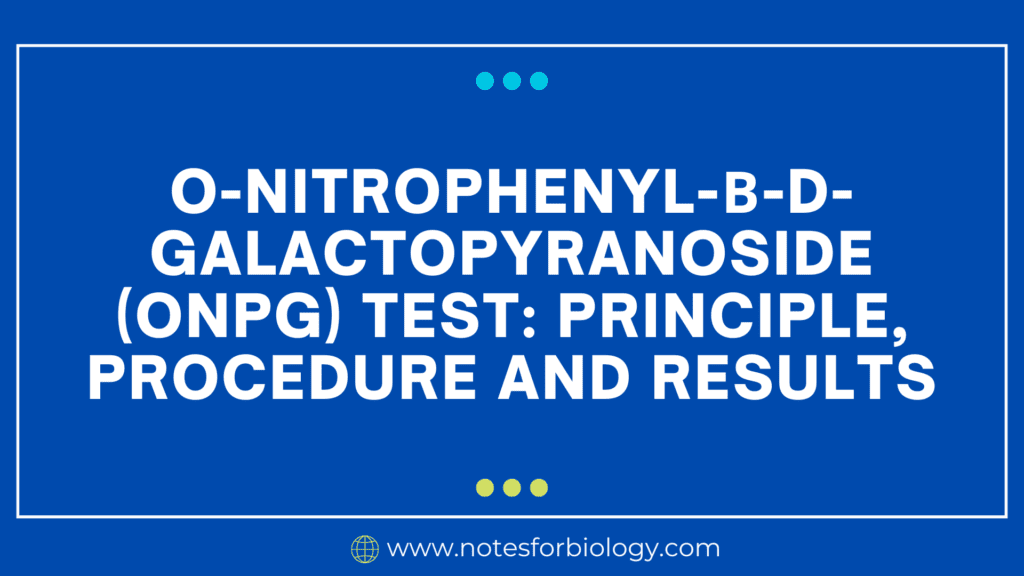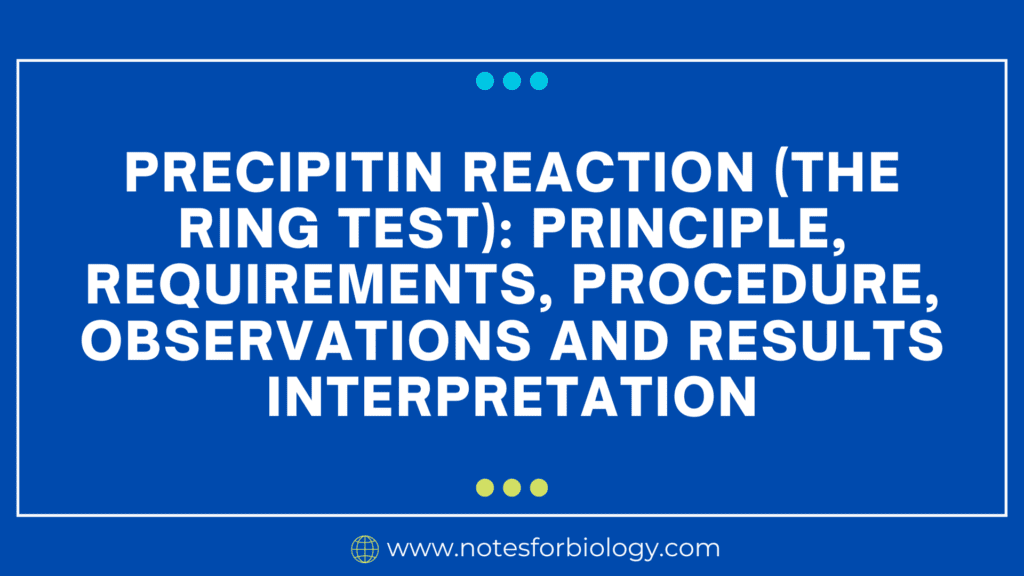O-Nitrophenyl-β-D-Galactopyranoside (ONPG) test is a simple and effective method for detecting β-galactosidase activity in bacteria. By providing a clear visual result based on color change, it aids in the identification and differentiation of bacterial species, especially within the family Enterobacteriaceae.
Table of Contents
O-Nitrophenyl-β-D-Galactopyranoside (ONPG) test
O-Nitrophenyl-β-D-Galactopyranoside (ONPG) test detects the presence of the enzyme β-galactosidase in bacteria. The ONPG test identifies lactose-fermenting bacteria by detecting their ability to generate β-galactosidase, an enzyme that breaks down lactose into glucose and galactose. The ONPG test detects the presence of the enzyme β-galactosidase in bacteria. This enzyme is responsible for converting lactose into glucose and galactose. The test is highly useful for separating lactose-fermenting bacteria from non-lactose fermenters, a critical step in microbial identification, particularly within the Enterobacteriaceae family.

Principle
ONPG is a synthetic substrate that mimics lactose. In the presence of β-galactosidase, ONPG is degraded into galactose and o-nitrophenol, a yellow molecule. A positive test result for β-galactosidase is shown by the yellow color produced.
Synthetic substrate:
ONPG is a synthetic substance with structural similarities to lactose. It is colorless and serves as a substrate for detecting β-galactosidase activity.
Enzyme Action:
β-Galactosidase is an enzyme found in microorganisms that breaks down ONPG. The β-galactosidase enzyme breaks down the glycosidic link in ONPG.
Hydrolysis Reaction:
The hydrolysis of ONPG by β-galactosidase produces two products:
Galactose is a basic sugar.
O-nitrophenol is a yellow-colored chemical.
Color Change:
The creation of o-nitrophenol, which is yellow, indicates a good reaction. The intensity of the yellow color corresponds to the quantity of β-galactosidase activity present in the sample.
Procedure
Preparing of bacterial suspension:
Inoculate the test organism in an appropriate medium and incubate for 18-24 hours.
Harvest the cells and make a bacterial suspension in a buffer solution (usually phosphate buffer).

ONPG Solution:
Prepare the ONPG substrate solution in a buffer, typically at a concentration of 4 mg/mL. The ONPG solution is a key component in the ONPG test, used to detect the presence of the enzyme β-galactosidase in microorganisms. The solution contains the synthetic substrate O-Nitrophenyl-β-D-Galactopyranoside (ONPG), which is hydrolyzed by β-galactosidase to produce a yellow-colored product, o-nitrophenol.
Mixing and incubating:
Transfer the bacterial suspension to a test tube.
Add an equivalent volume of ONPG substrate solution to the test tube.
Incubate for up to 24 hours at 35-37°C, vigorously mixing the components. Some techniques recommend a shorter incubation period, ranging from 30 minutes to a few hours, depending on the bacterial strain and predicted enzyme activity.

Observation:
After incubation, check the color change in the test tube.
Results Interpretation
A positive result is when the test tube becomes yellow. The bacterium generates β-galactosidase, which converts ONPG into o-nitrophenol and galactose.
A negative result is when the solution does not change color and stays clear or bright. This indicates that the organism does not produce β-galactosidase or has inadequate amounts to hydrolyze ONPG during the test time.
Applications
- Identification of the Enterobacteriaceae: The ONPG test is especially useful for separating late lactose fermenters (e.g., some Escherichia coli strains) from non-lactose fermenters (e.g., Salmonella and Shigella).
- Differentiation of Gram-negative Bacteria: Helps to distinguish between bacteria that ferment lactose quickly and those that do so slowly or not at all.
- Clinical Diagnostics: Used in clinical microbiology to identify pathogens and guide treatment decisions based on the metabolic capabilities of the bacteria.
Frequently Asked Question
What is O-Nitrophenyl-β-D-Galactopyranoside (ONPG) test ?
O-Nitrophenyl-β-D-Galactopyranoside (ONPG) test detects the presence of the enzyme β-galactosidase in bacteria. The ONPG test identifies lactose-fermenting bacteria by detecting their ability to generate β-galactosidase, an enzyme that breaks down lactose into glucose and galactose.
What are the Principle of O-Nitrophenyl-β-D-Galactopyranoside (ONPG) test ?
ONPG is a synthetic substrate that mimics lactose. In the presence of β-galactosidase, ONPG is degraded into galactose and o-nitrophenol, a yellow molecule. A positive test result for β-galactosidase is shown by the yellow color produced.
Related Article
Transplant immunology: Types of graft, and transplant rejection




